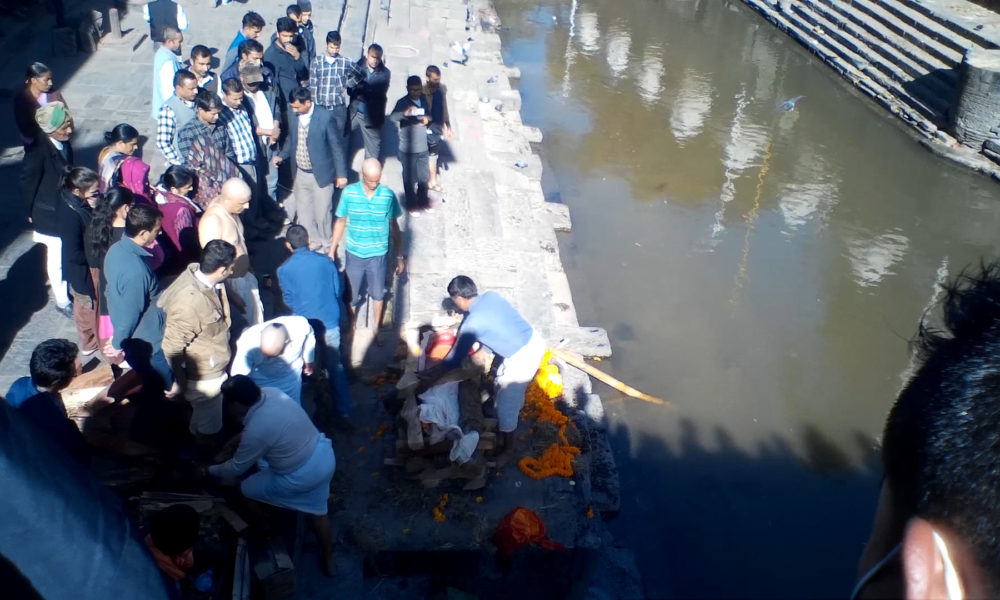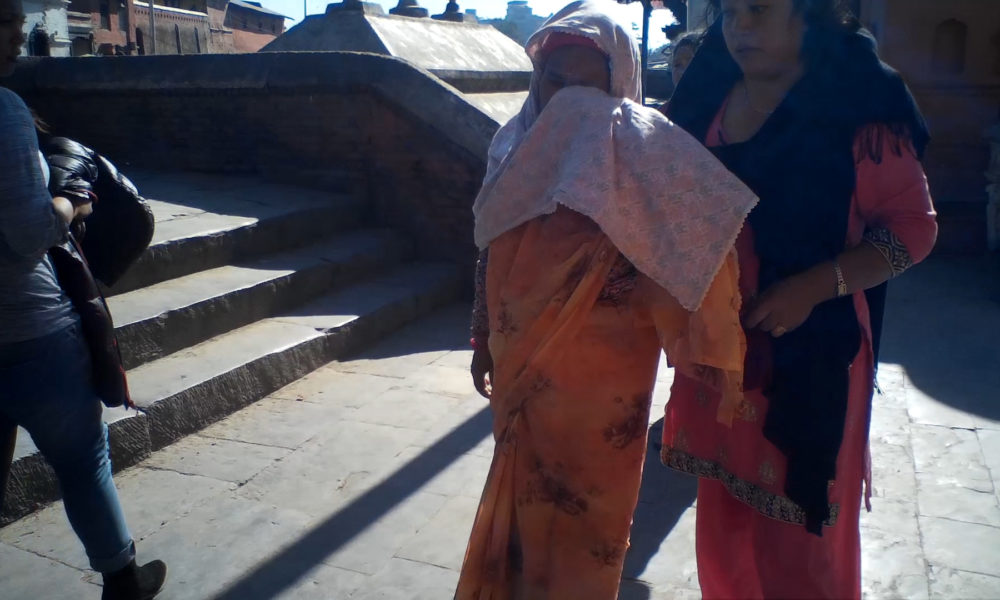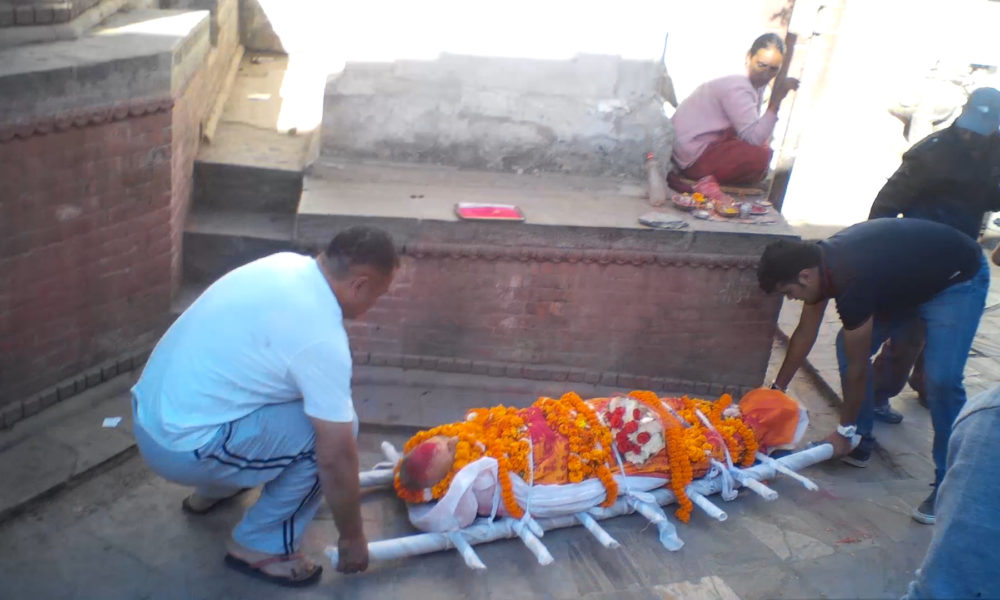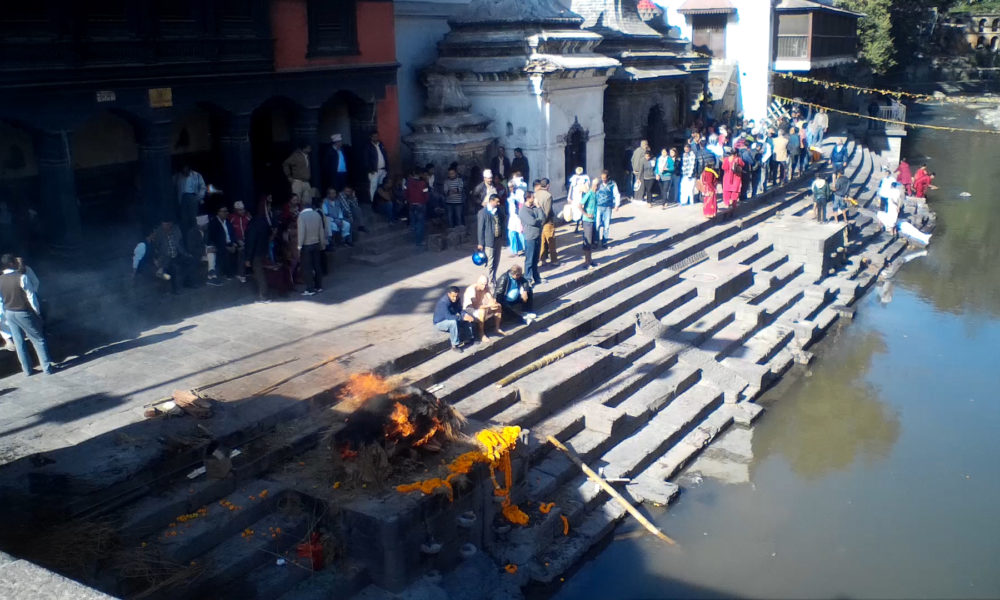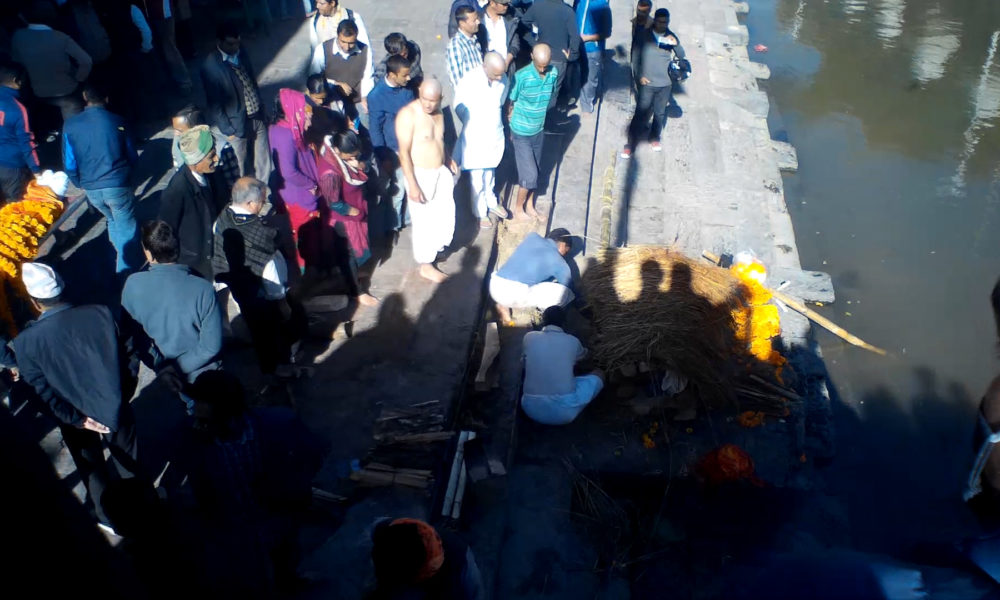“It smelled like bacon.”
When Joseph returned to Kathmandu, there was one last place he wanted to visit, a sacred holy site called Pashupatinath Temple.
Pashupatinath is a Hindu temple dedicated to the Pashupati, the lord of animals, a manifestation of the God Shiva.
Entrance to the temple is restricted to Hindus only, but Joseph was able to get a great view of the temple because of its proximity to the Bagmati River.
Pashupatinath is frequently used for cremations, and that is precisely what Joseph saw.
Initially the body is washed in the river, and then moved it to the cremation area, where they undress it.
“They build a little platform for the body,” Joseph said. “Under that they put little bricks, which I assume is some sort of accelerant.”
Additionally, the body is covered in a type of fat, which is also used as an accelerant. Next, the priests cover the body in logs and hay, and set a small fire on the chin and chest of the body.
“Strangely enough, when I was taking pictures of it, I noticed that my shadow was cast on the fire itself,” he said. “I thought that was an interesting juxtaposition of me in the frame and what was going on.”
Despite being a religious ceremony, it’s not necessarily a solemn occasion. While the family may be in grief, there are still young children playing in the water, dogs are running wild and tourists who watch the entire ceremony.
